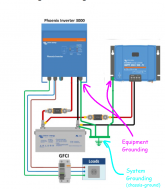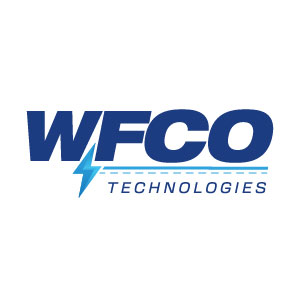Though You shouldn't have to rely on them. I believe the Battle Born Batteries will shut down (through the internal BMS) before the voltage gets low enough to damage the battery (Check with them to verify). That being said, it's nice to have an inverter where You can adjust the low voltage point that it shuts down at. I'm not sure if the 40amp DC-DC Converter for 12v appliances will shut down before reaching the minimum voltage that the Battle Born Batteries would accept. But like I said before, the internal BMS of the Battle Born Batteries should shut down before reaching the minimum voltage (and any battery damage). As I recall, if the BMS forces the Battle Born Batteries to shut down, there might be something that needs to be done, before they will start up again. Battle Born will have the information on that. I would add a fuse between the battery and the cable, and not rely on the BMS on the Battle Born (just an added safety feature).
Wouldn't hurt to add more solar panels either if You have the room. Currently, You have just enough panels to charge 2 depleted Battle Born batteries on a typical Arizona Summer Day, with the right orientation and no shading. As I recall, the Battle Borns are rated at .5C charge rate. So You can safely charge them at 1,000 watts an hour (You might have to increase the guage of you wires). With the panels You now have, the maximum charge You will get is 400 watts an hour.
Be aware that the 40amp DC-CD converter will consume a few watts even if it's not in use (as will the inverter if on). So, make sure You disconnect the batteries if You aren't using the system.
I'm sure You'll have allot of enjoyment with your system. I have built a system similar to the one You are building. And it's been fun and informative.
Wouldn't hurt to add more solar panels either if You have the room. Currently, You have just enough panels to charge 2 depleted Battle Born batteries on a typical Arizona Summer Day, with the right orientation and no shading. As I recall, the Battle Borns are rated at .5C charge rate. So You can safely charge them at 1,000 watts an hour (You might have to increase the guage of you wires). With the panels You now have, the maximum charge You will get is 400 watts an hour.
Be aware that the 40amp DC-CD converter will consume a few watts even if it's not in use (as will the inverter if on). So, make sure You disconnect the batteries if You aren't using the system.
I'm sure You'll have allot of enjoyment with your system. I have built a system similar to the one You are building. And it's been fun and informative.




